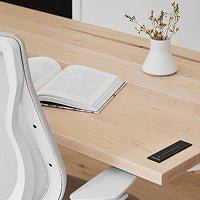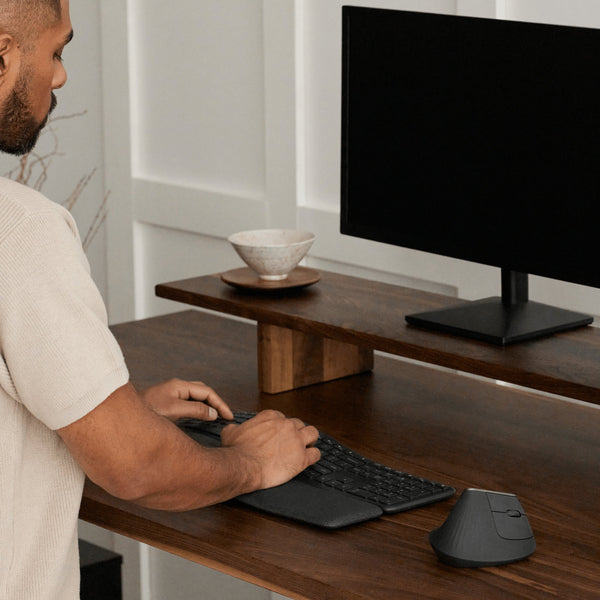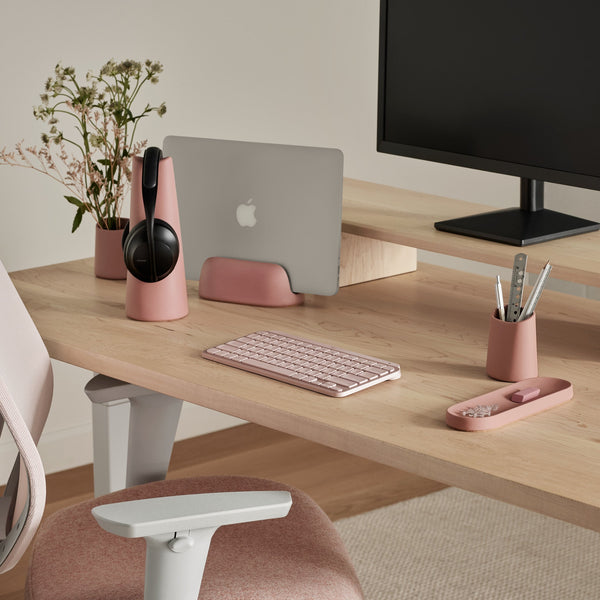Getting through a long productive work day is both rewarding and tiring – but with chronic back pain, it can be downright unbearable.
Though extremely common, not everyone who is bothered by back pain experiences the same thing. However, all sufferers (who account for an estimated 80% of the American population) can attest to the extremely negative impact back pain can have on overall quality of life. This includes work life – the place where, for many of us, our back pain begins in the first place.
Fortunately, if you’re concerned about falling victim to the perils of occupational back pain, there are some precautions that you can take in the name of prevention. Here’s how to get started:
1. Tackle the Problem of Bad Posture Once And For All
Posture: a word that can inspire fear in even the most health-conscious of us. Perfecting your posture, while difficult to do, can have life-changing effects. Some of the benefits of proper posture include:
- Prevention of unnecessary muscular stress.
- Proper alignment of bones and joints.
- Fight against muscle fatigue.
- Pain prevention.
To do a quick test to see that you are sitting with proper posture, sit up straight in your chair with your back properly aligned. Your feet should fall flat on the floor with your weight evenly distributed between your legs. Some people find it helpful to imagine a straight line that connects from your ears to your hips.
If you have a slouching habit that is particularly stubborn, it may be useful to set an alarm on your phone. Every time your alarm goes off, verify that you are not slouching. Like any habit, it’s a matter of practicing over and over again before it begins to feel natural. It is also okay to use some form of support behind your back – even a rolled up towel will do!
2. Sit Properly
Ideally, you should be seated as far back as possible on your chair with your legs bent at a 90 degree angle. Again, your feet should be either on the ground or on a foot rest. Although it’s tempting to spend the entire day with one leg crossed in front of the other, this is not the best position for your back. Other things to keep in mind when sitting include:
- Keep your legs in line with your hips. It’s okay if they happen to fall a bit lower.
- Armrests can help take some of the strain off of your upper body, but are not necessary. If their presence is inconvenient, feel free to remove them.
3. Your Desk Height: Is It Appropriate For You?
One detail that is seldom talked about but so conducive to a healthy work environment is the height of your desk. Most desks are an average of 29 inches tall, which is suitable for most people within the height range of 5’8”- 6’0”. If you fall outside of that range, you might be tempted to adjust your chair height to better fit your desk height, but don’t do it because it could lead to unwanted strain on your legs.
The optimal solution is really to get an height adjustable desk so you adapt its height to you instead of the other way around. Although they can be extremely beneficial for those with chronic back pain, there are still some things to keep in mind to make sure you get all the benefits from using a sit-stand desk properly:
- When using a standing desk, your elbows should naturally fold at a 90 degree angle.
- Much like sitting in a desk, you should be standing at your desk using proper posture, with your feet in line with your shoulders and hips.
- Invest in an anti-fatigue mat for some extra back and knee relief.
- Alternate between a standing and sitting position every 20-30 minutes.
- Choose a pair of footwear that offers you ample support.
4. Is Your Screen the Proper Distance Away?
Yes, more advice in the form of measurements, but this time we won’t make you take any rulers out. In order to determine whether or not your computer screen is the proper distance away from you, stick your arms out. Do your arms reach your computer? As a general rule, your computer monitor should be positioned about an arm’s length distance away from you.
As far as screen height goes, there is also a simple way to determine whether or not you have yours at the appropriate height. Are your eyes should be in line with the address bar? If they aren’t, your screen position needs to be changed.
5. Pay Attention to Your Keyboard and Mouse
Much like your chair or computer screen, the position that your mouse and keyboard is in affects the way you feel as well. For most people, keyboards should be placed only one or two inches above your thighs. Again, if you’re not in the height range of 5’8”- 6’0”, using a traditional fixed desk is likely preventing you from respecting this ergonomic rule.
Additionally, your mouse and keyboard should also be placed in line with one another so that you don’t have to strain when reaching for either of them.
6. Chairing is Caring
It goes without saying that, just like your choice of desk is important, the type of chair that you use is endlessly important too. Here are some things to take into consideration when shopping for an office chair:
- Look for a chair that has built-in lumbar support for your lower back. Ideally, this support should be adjustable so that you can tune it to your specific needs.
- Speaking of adjustments, make sure that your office chair can be personalized in other ways, including armrests, backrest, and height.
- Look for chairs that are built with memory foam cushions for added back support.
- Look for a chair that is on wheels and has the ability to swivel. This will stop you from straining your arms to reach for objects on your desk.
7. Embrace the Power of Stretching
Stretching at work, especially if you work in an open concept office, may feel silly at first, but its benefits will quickly outweigh any apprehension that you have. Doing simple stretches for your back, shoulders, and neck can go a long way to ensure that your muscles are activated in a healthy way. Here are some stretch ideas:
- Soft neck rotations.
- Shoulder shrugs.
- Hamstring stretch.
- Shoulder rolls.
8. Break It Up
We saved it for last, but this tip may actually be the most important. The important of getting up and moving - even so slightly - cannot be understated. If you’re spending long hours sitting at a desk, it is recommended that you take a break every thirty minutes or so for a duration of one or two minutes.
Taking “micro breaks” not only helps increase blood flow but has also been proven to help with productivity and prevent strain and muscular pain. Micro breaks can be something as simple as doing a small stretch at your desk or taking a short walk to the office kitchen. An excuse for having that third cup of coffee, after all!
Have you found a life-changing way to cope with your chronic back pain? Let us know by writing us at info@ergonofis.com






Leave a comment